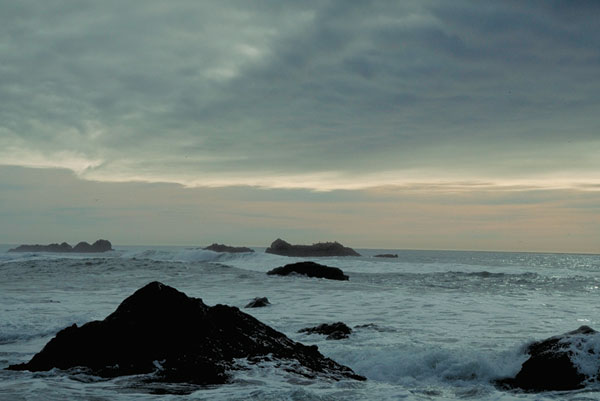Image Potential: Knowing What You Can Do After Makes You A Better Photographer
Understanding the potential of each shot (as well as its limitations) will make you a better photographer. It will foster a creative environment that will raise your images to another level. The key is understanding that the image you see on review is often a pale sketch of what the captured image holds, usually a JPEG preview of a much more information-rich image. It is also in understanding just what you can do with all the information an image holds, and that unleashing its full potential is part and parcel of digital photography practice.
It can be as simple as knowing that the image you see on the screen after the shot is nothing more than a quick preview. Image (#1) emulates what you might see on the LCD screen after taking a shot and viewing it under lighting conditions that obscure the view, while (#2) shows what the scene looked like and what is within the file.

All Photos © George Schaub, All Rights Reserved
This idea can also extend to “previsualizing” what the image will look like when you make certain settings or have a certain intent about contrast, color and tone. For example, this shoreline (#3) is recorded nicely in “normal” color but becomes something entirely different when recorded in Monochrome mode with a blue filter and a +1.5 Contrast setting (#4).


Live View mode can make a real difference in your work and if you have a camera that allows you to see what the image will look like as you change settings it can go a long way toward gaining an appreciation of the potential within every frame. This is especially true when you are photographing in Monochrome (black and white) mode. It can be tough to see in monochrome, but Live View changes the game. This photo among the Geysers in Yellowstone is exciting in color (#5), but also works in Monochrome with a red filter effect and +1 contrast setting (#6). Both work well but knowing what you can do to change your image interpretation opens up so many more creative possibilities.

Processing reveals everything an image has to offer, and more, and learning to work on an image using Raw conversion and additional software will complete the circle you began when you first snapped the shutter. It can make every image a customized, personal view. Image (#7) is the untouched image right out of the camera as it appeared on the monitor. Not bad but not everything it could be. Image (#8) is an interpretation of the image that matches what I saw and what made me take the picture. The difference between recording and perception is how you treat the image after downloading, and is all part of a process that understands how image processing can transform a “sketch” into a final visual statement.














































